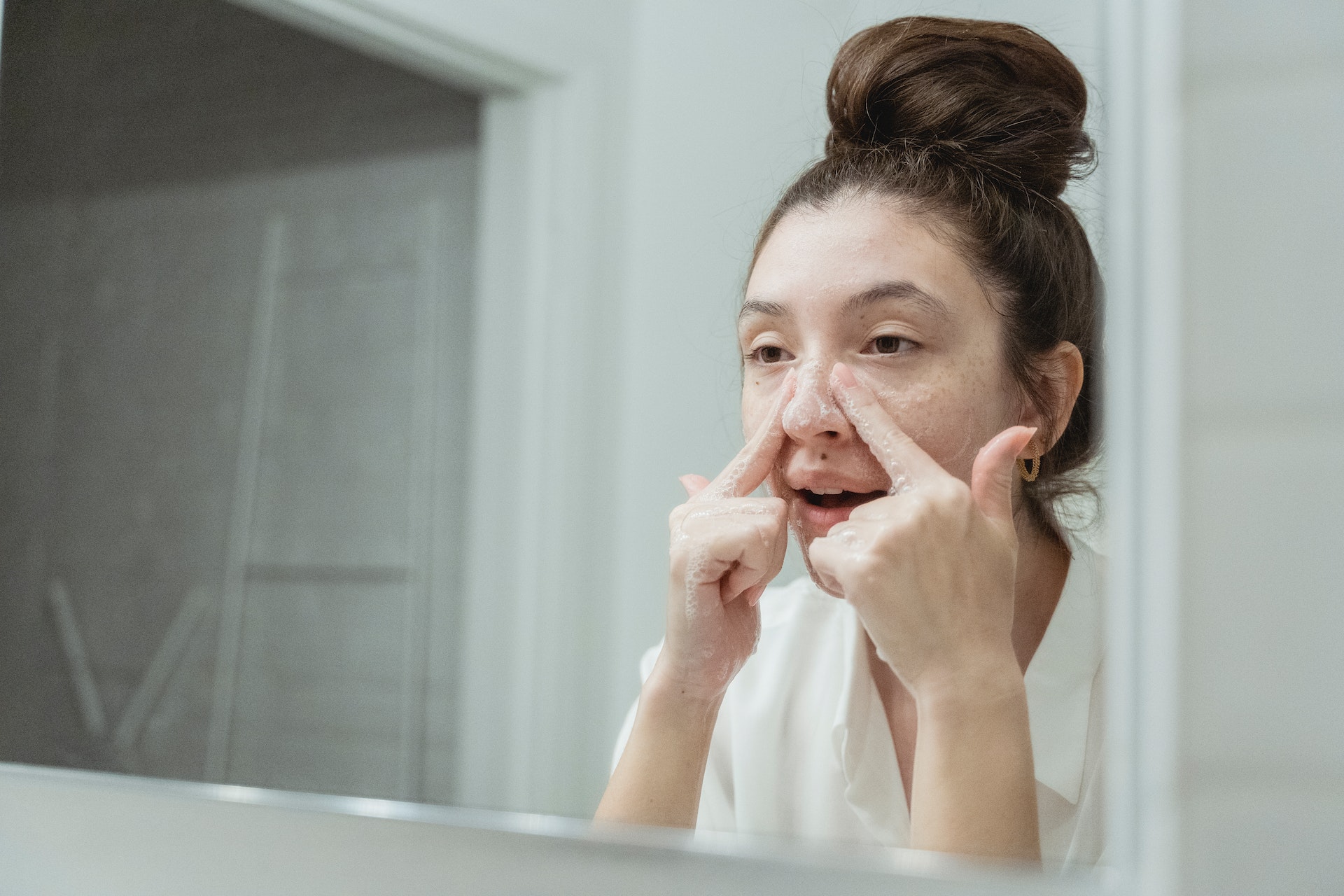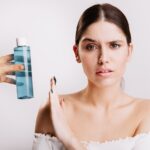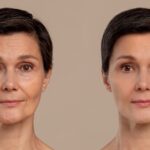Taking care of your skin should be a top priority as it is one of the largest and most visible organs in your body. The market offers a wide range of skincare products and routines, which can be overwhelming when trying to determine the best approach for your skin type. However, establishing a consistent skincare routine tailored to your specific needs can significantly improve the overall health and appearance of your skin.
In this comprehensive guide, we will walk you through ten essential steps for the ultimate skincare routine that will leave your skin glowing and healthy.
Determining Your Skin Type
Before delving into the steps, it is crucial to identify your skin type. There are five basic skin types: normal, oily, dry, combination, and sensitive. Understanding your skin type will assist you in selecting the appropriate products and routines that cater to your skin’s specific requirements.
To determine your skin type, carefully observe the texture of your skin, oil production, and sensitivity. Oily skin tends to appear shiny with larger pores and is more prone to acne. Dry skin may exhibit flakiness, itchiness, or irritation and can feel rough to the touch. Combination skin is a blend of oily and dry skin, with increased oil production in the T-zone area. Sensitive skin may display redness, itchiness, or a stinging sensation in response to certain products.
Step 1: Cleansing
Cleansing forms the foundation of any skincare routine as it eliminates dirt, makeup, and impurities from your skin, preparing it for subsequent steps. Opt for a gentle cleanser that won’t strip away your skin’s natural oils.
Apply the cleanser to your face and neck using circular motions, then rinse with lukewarm water. Avoid using hot water as it can be too harsh for your skin.
Step 2: Exfoliating
Exfoliating removes dead skin cells that can clog your pores and contribute to breakouts. Use a physical or chemical exfoliant once or twice a week, depending on your skin’s sensitivity.
Physical exfoliants employ granules or beads to manually eliminate dead skin cells, while chemical exfoliants use acids to dissolve them. Be cautious not to over-exfoliate as it can damage your skin’s protective barrier.
Step 3: Toning
Toning helps balance your skin’s pH level and prepares it for the subsequent steps in your routine. It can also minimize the appearance of pores and remove any remaining traces of makeup and impurities.
Choose an alcohol-free toner that is gentle on your skin. Apply it to your face and neck using a cotton pad, allowing it to absorb before proceeding to the next step.
Step 4: Applying Serums
Serums are highly concentrated treatments that target specific skin concerns such as wrinkles, dark spots, and dullness. Apply a small amount of serum to your face and neck, focusing on the problematic areas.
Serums should be applied before moisturizer to ensure deep penetration into your skin.
Step 5: Eye Cream
The skin around your eyes is delicate and susceptible to wrinkles and fine lines. Using an eye cream can moisturize and protect this sensitive area. Select an eye cream that addresses your specific concerns, such as dark circles or puffiness.
Using your ring finger, apply a small amount of eye cream to the under-eye area, starting from the inner corner and moving outward. Gently pat the cream onto your skin, being careful not to tug or pull the skin.
Step 6: Moisturizing
Moisturizing is vital for keeping your skin hydrated and healthy. Choose a moisturizer suitable for your skin type, containing ingredients that nourish and protect your skin.
Apply a small amount of moisturizer to your face and neck, using upward and outward motions. Don’t neglect your neck in your skincare routine, as it is often overlooked and can display signs of aging.
Step 7: Sun Protection
Sunscreen is an essential step in any skincare routine. Exposure to UV rays can cause premature aging, sunburns, and even skin cancer. Opt for a broad-spectrum sunscreen with an SPF of at least 30, and reapply every two hours when outdoors.
Apply sunscreen to your face and neck, as well as any other exposed areas like your hands and arms. Remember to wear protective clothing and seek shade during peak sun hours for further skin protection.
Step 8: Face Masks
Face masks can provide an additional boost to your skincare routine by offering hydration, exfoliation, and addressing specific concerns like acne or dullness. Select a mask suitable for your skin type and concerns, and use it once or twice a week.
Apply the mask to your face and neck, avoiding the eye and mouth area. Leave it on for the recommended time, then rinse it off with lukewarm water.
Step 9: Facial Oils
Facial oils can offer extra hydration and nourishment to your skin. Choose an oil suitable for your skin type and concerns, and apply a few drops to your face and neck after moisturizing.
Massage the oil into your skin using upward and outward motions, allowing it to absorb before proceeding to the next step.
Step 10: Lifestyle Habits for Healthier Skin
Healthy skin extends beyond skincare products. Adopting healthy habits such as staying hydrated, eating a balanced diet, getting enough sleep, and managing stress can all contribute to healthy, radiant skin.
Incorporating these ten steps into your skincare routine can significantly improve the health and appearance of your skin. Remember to choose products that cater to your skin type and specific concerns, and don’t forget to adopt healthy lifestyle habits to further support your skin’s well-being.
FAQs
What is the best skincare routine for oily skin?
The best skincare routine for oily skin involves gentle cleansing, exfoliating once or twice a week, using a lightweight moisturizer, and incorporating products with salicylic acid or benzoyl peroxide to address acne concerns.
Can I skip certain steps in my skincare routine?
While it’s important to follow all ten steps in a skincare routine for optimal results, certain steps may be skipped or adjusted based on individual needs and preferences. For example, some people may not need to use a toner or facial oil, while others may choose to use a face mask more frequently.
Can I use the same products for my face and body?
While some skincare products can be used on both the face and body, it’s important to choose products specifically formulated for each area. The skin on the body is thicker and often requires more hydration than the face, so body lotions and creams tend to be thicker and more moisturizing than facial products.
When should I start using anti-ageing products?
It’s never too early to start using anti-aging products as prevention is key to maintaining youthful and healthy skin. Incorporating products with antioxidants, retinol, and vitamin C into your skincare routine in your 20s and 30s can help prevent and minimize the signs of aging.
How often should I exfoliate my skin?
The frequency of exfoliation depends on individual skin type and concerns. Generally, exfoliating once or twice a week is sufficient for most people. However, those with sensitive skin may need to exfoliate less frequently, while those with oily or acne-prone skin may benefit from more frequent exfoliation. It’s important to listen to your skin and adjust your routine as needed. To learn more about the importance of exfoliation and how to do it right, visit our website.






